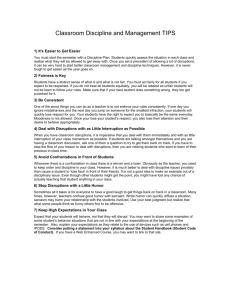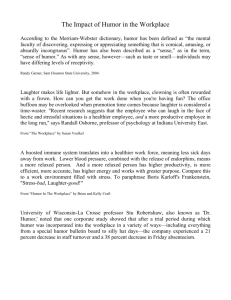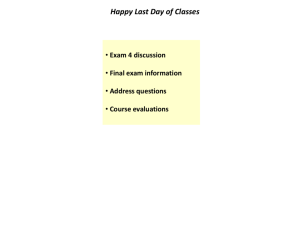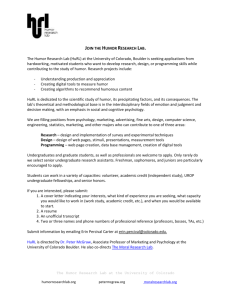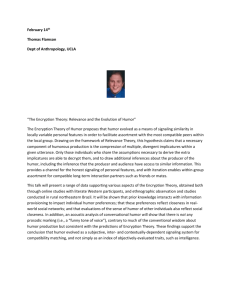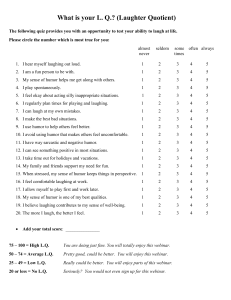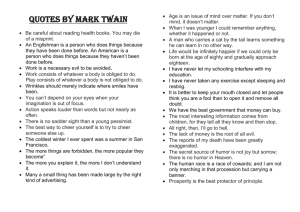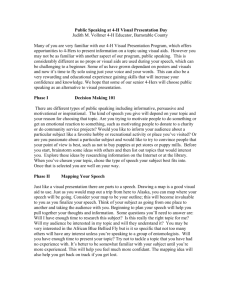Three Fs
advertisement
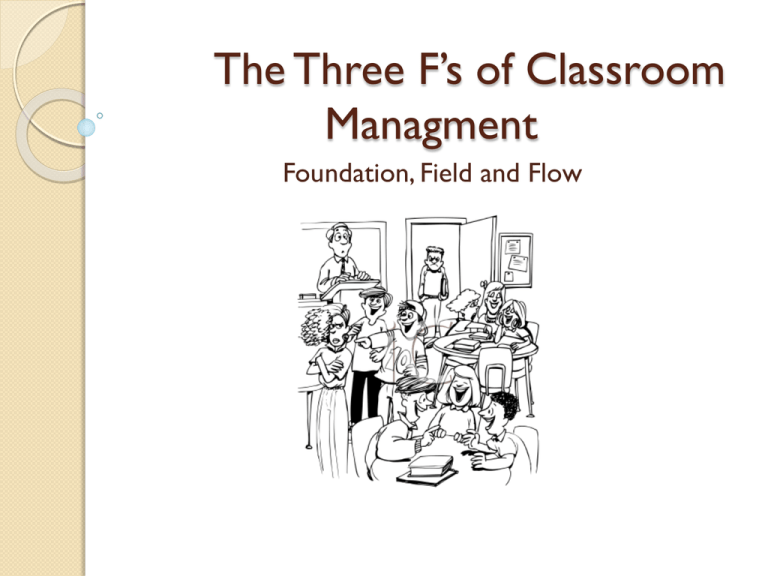
The Three F’s of Classroom Managment Foundation, Field and Flow Classroom Management - What and Why? Classroom management is a complex practice that requires teachers to possess a multi-level skill set. Classroom management is the most important factor governing student learning (Wong 1998) Classroom management is a multi-faceted construct that includes three broad dimensions: person, instruction, discipline (Laut, 1999) Classroom management is not and should not be considered as a construct divorced from the classroom teaching and learning experience What are the Three F’s? Extensive review of research and literature revealed three overarching themes of successful classroom management Foundation- the rules, consequences, attitudes and impressions established by the teacher from the first day of class and beyond Field – the environment or playing field the teacher establishes in the classroom Flow – the fluid movement of the lessons such that it can be directed and channeled in its course by both teachers and students toward a learning objective Foundation Rules and expectations for behavior and performance. Must begin on 1st day (Douglas 1986). Clear expectations related to rules and procedures must be established along with consequences for not following these rules. Teacher uses the rules to foster respect among students and among student and teacher. Does not mean high levels of discipline. Ultimate goal is to use management to avoid discipline. Field – Environment in the Classroom Must foster a classroom environment of respect & cooperation. High expectations for all students. Teacher “withitness” is critical (knowing what’s going on). Need to have respect and awareness of equity issues and diversity. Appropriate implementation of rules and procedures is critical. Students should face logical consequences to breaking the rules. Humor is important. Humor emancipates creativity and stimulates higher level thinking. Individuals who find humor are: Persistent problem solvers Flexible to consider alternatives Relieved of tension Flow – “Keep it Moving” Flow consists of: Time management used in presenting the lesson Learning theories used by the teacher to provide activities and variety to the lesson Questioning strategies used to drive the lesson and assess the learning of the student The lesson design Any materials or technology used as part of the lesson design Proper flow deters student boredom, frustration, and consequent behaviors. No wasted or undirected use of time at the beginning and end of the lesson. It is critical to have momentum and smoothness in lesson (Kounin 1970). Consider a 5E Lesson Cycle to Improve Flow Engagement – used to capture student interest in topic and check for student mastery of prior knowledge Exploration - small group tasks to explore and discover lesson objectives Explanation – Students present to the teacher and their classmates their findings Extension or Elaboration – broaden lesson objectives to more complex levels and make connections Evaluation – summative assessment of student learning of the lesson objectives. Conclusion The Three F’s theory provides a comprehensive theory of classroom management. Promotes use of proper rules and procedures. Encourages active learning processes that allow for effective teaching and learning in the classroom. Proactive approach that fends off behavior problems by engaging students in the learning process through use of smoothly delivered and properly designed lessons. Structured enough to provide a blueprint while being flexible enough to allow for individual teacher personality and teaching style. Checkpoint What are the 3 “F”’s of classroom management? Briefly describe each “F” and why it’s important. Foundation- the rules, consequences, attitudes and impressions established by the teacher from the first day of class and beyond. This lays the groundwork for a productive learning environment. Field – the environment or playing field the teacher establishes in the classroom. Teacher needs to enforce high expectations for behavior and learning consistently. Flow – the fluid movement of the lessons such that it can be directed and channeled in its course by both teachers and students toward a learning objective. Creates active learning situation that is essential to a proactive classroom management approach.




